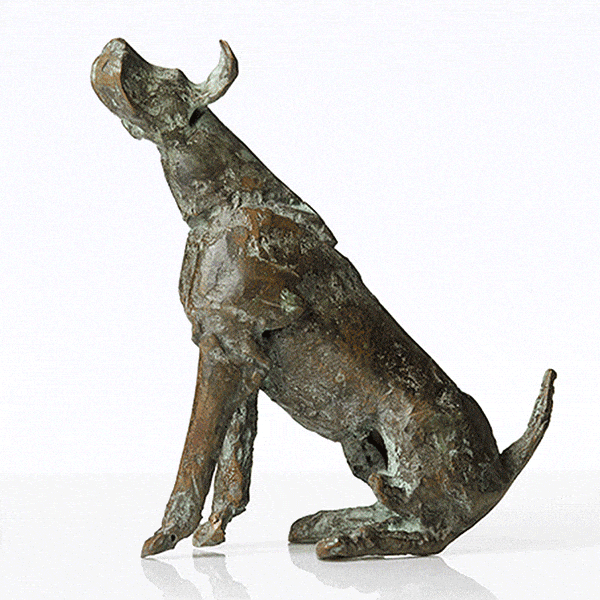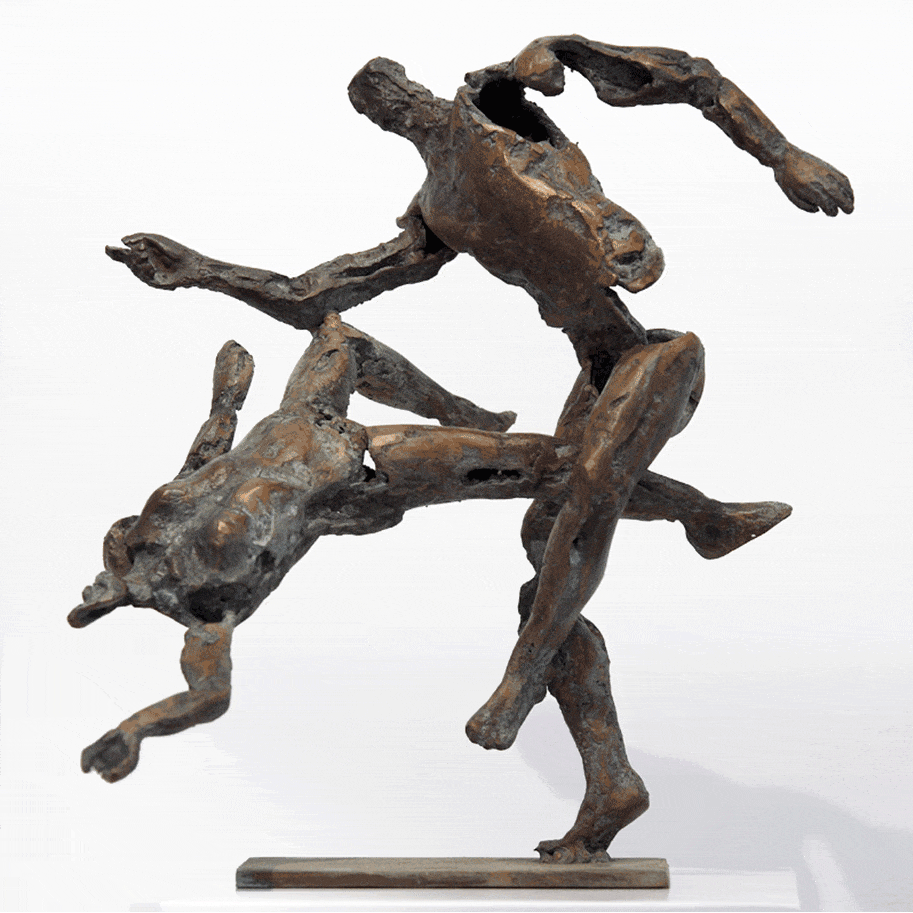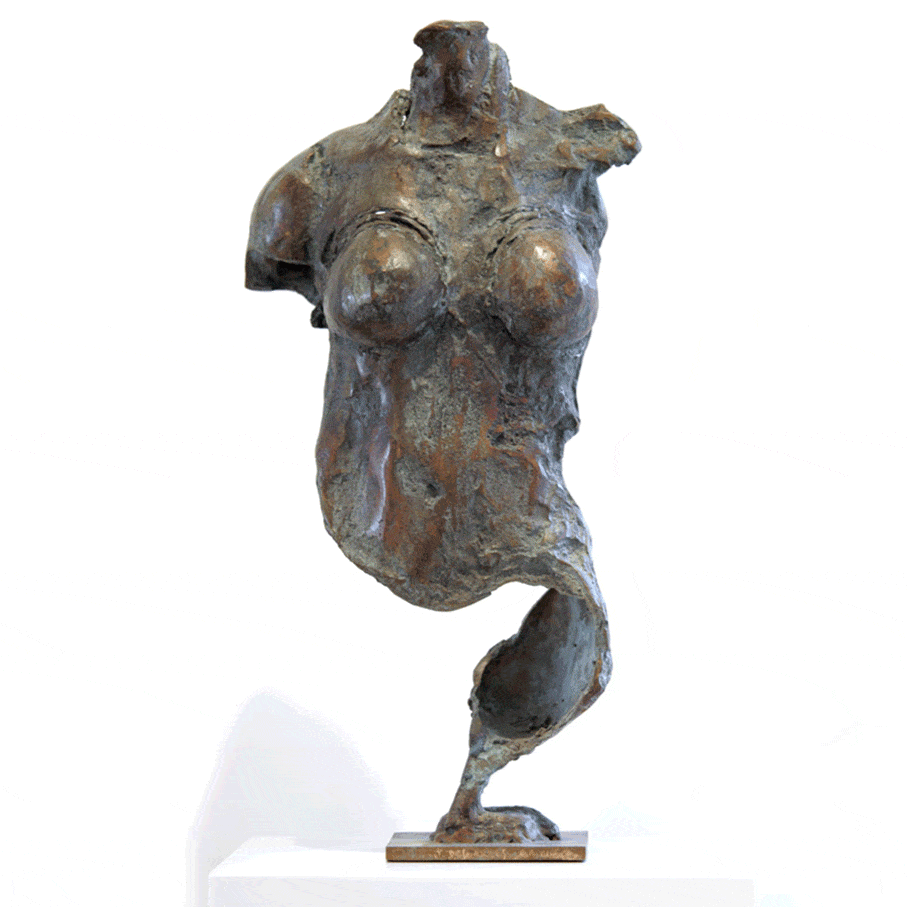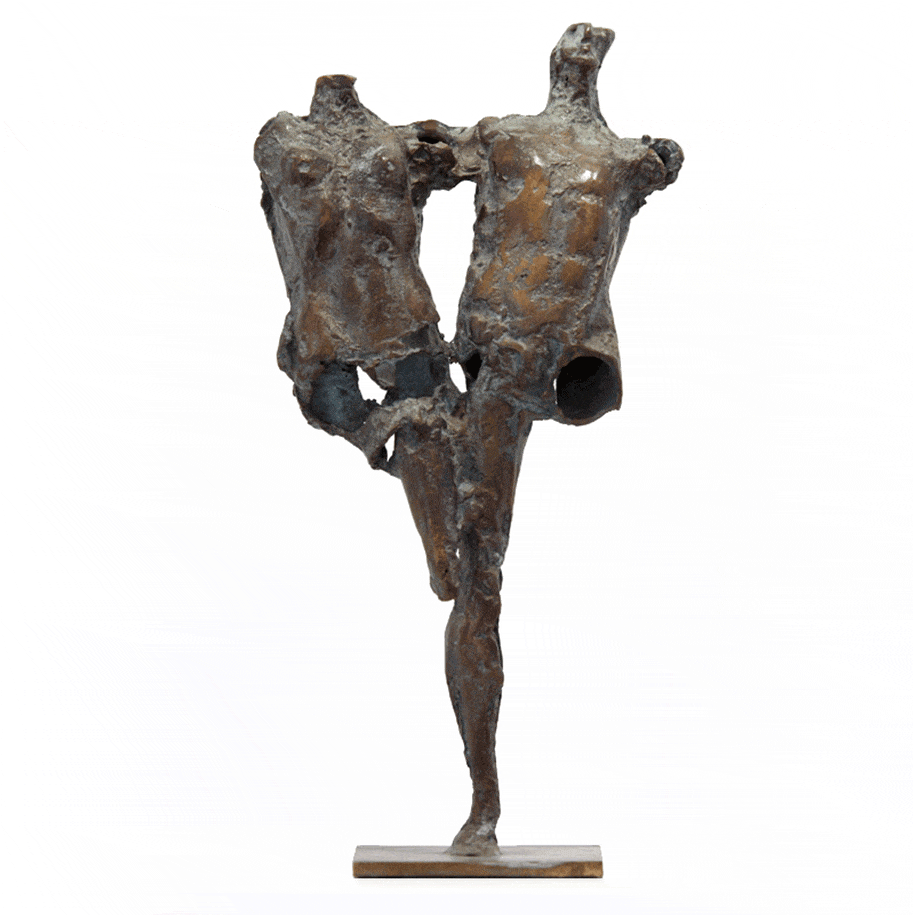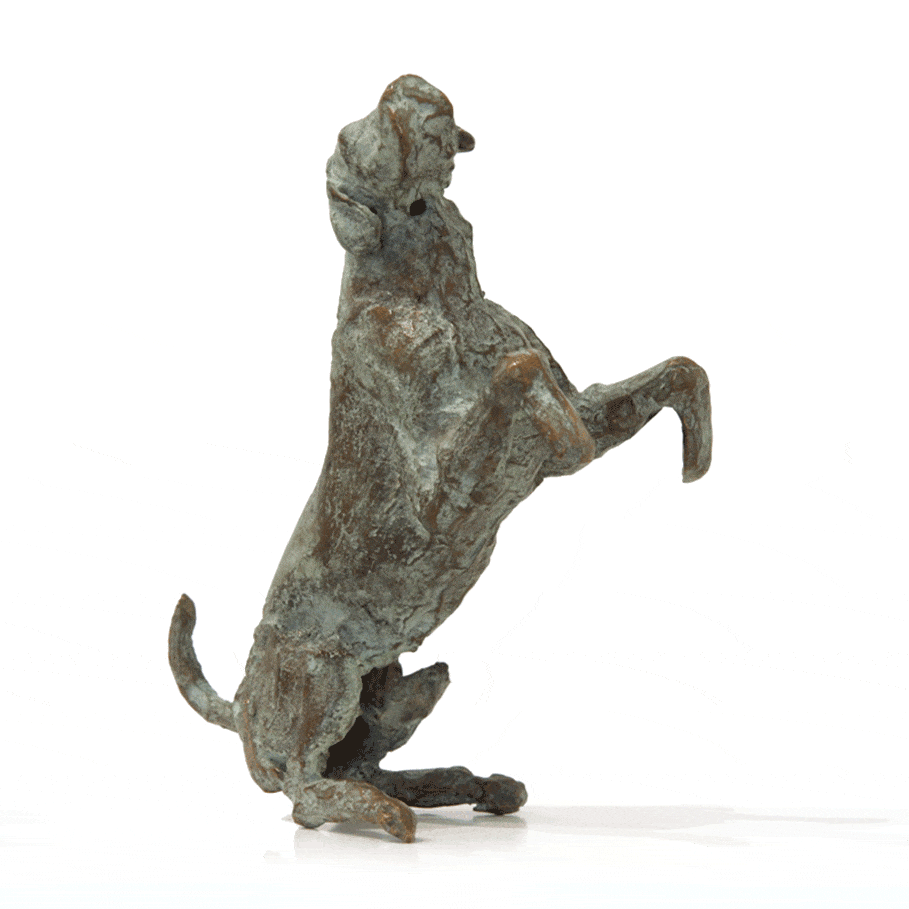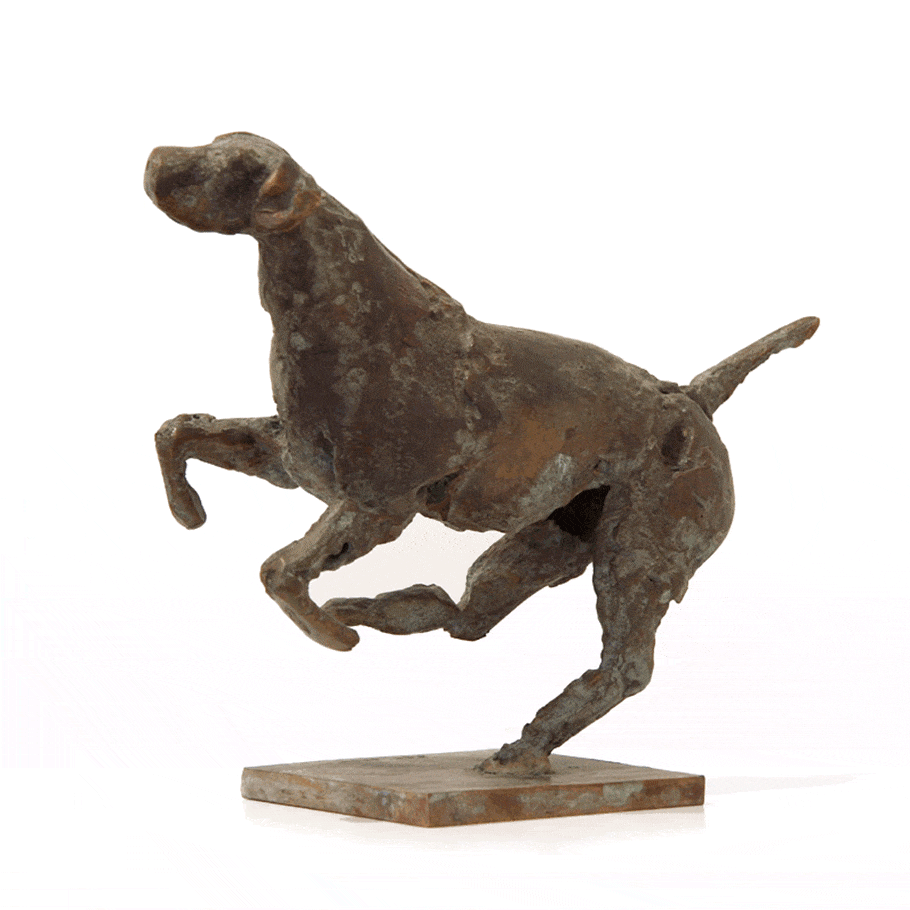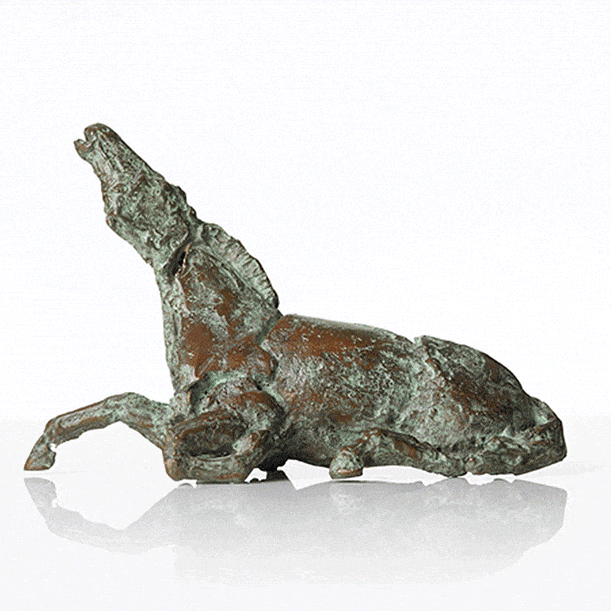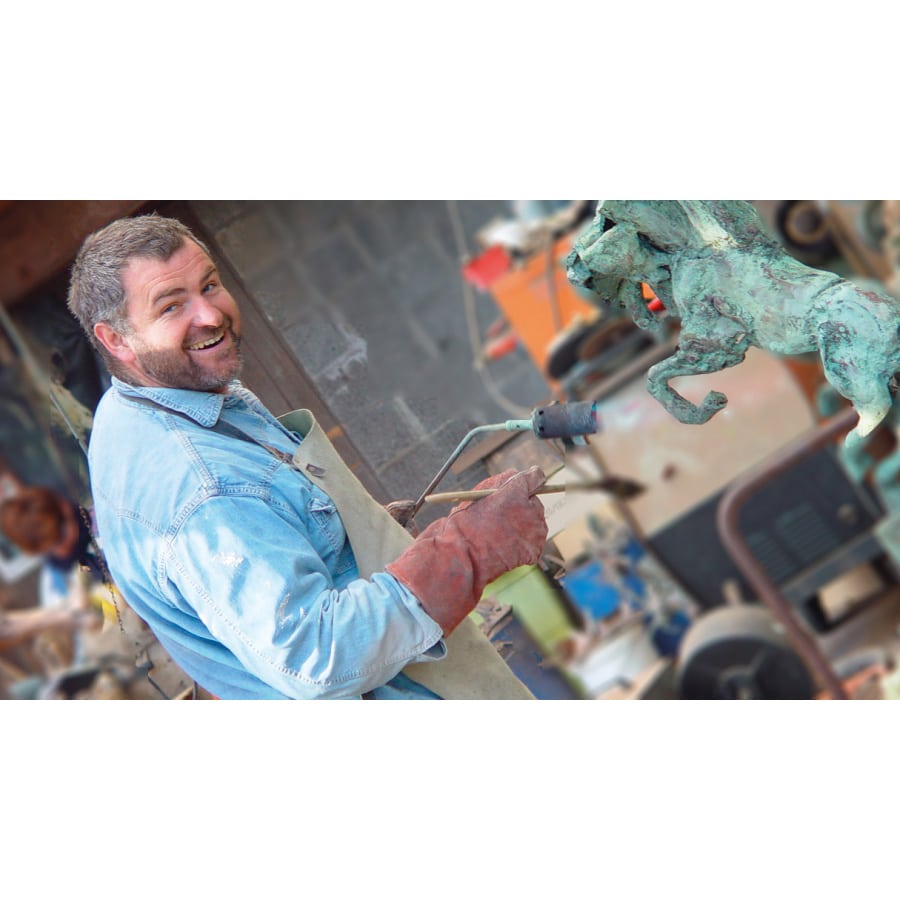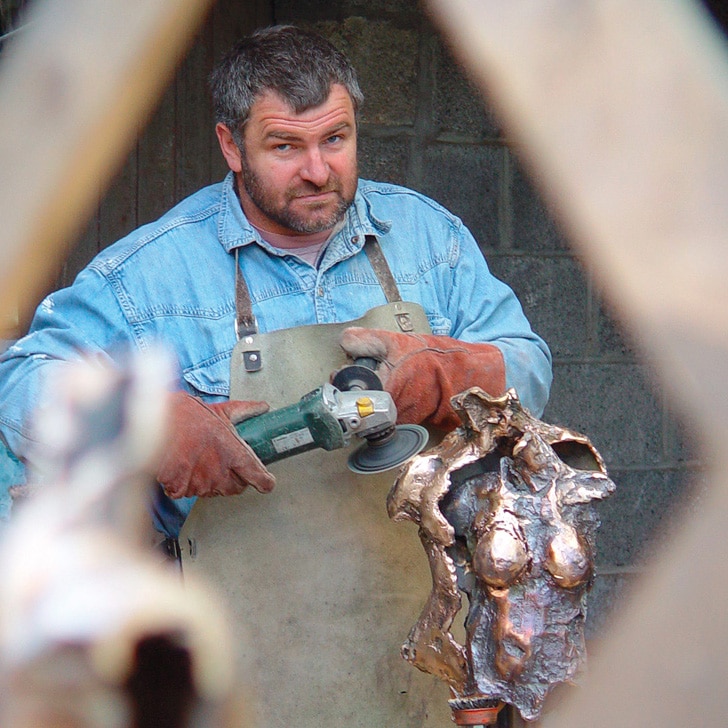
Jan Desmarets captures a moment frozen in time, mastering in his sculptures the art of simultaneously creating both movement and a static “snapshot” of life. Desmarets was born in the Belgian town of Ieper in 1961. Since his debut exhibition in 1985, after completing his artistic training at the Ghent Academy of Art, he has displayed his talents at several galleries and official expositions around the world.
 Although influenced by the classical tradition in sculpture, he nevertheless imbues his creations with their own proportions and personal characteristics, and his familiarity with the techniques of casting gives him freedom when transforming an idea into a finished work of art. He is represented in various European contexts by numerous public works of art, among them several monumental works.
Although influenced by the classical tradition in sculpture, he nevertheless imbues his creations with their own proportions and personal characteristics, and his familiarity with the techniques of casting gives him freedom when transforming an idea into a finished work of art. He is represented in various European contexts by numerous public works of art, among them several monumental works.
 He has, for example, created a number of bronze figures in a frenzy of forward momentum, and captured men and women in mid-leap. Gradually he has deepened his perspectives, and repeatedly he returns to variations of highly diverse animal motifs, having depicted a large number of horses, dogs and storks over the years. According to many interpreters the stork symbolises happiness and joy, and biblical exegetists often present the bird in a positive light, as its habit of feeding on snakes is seen as an eradication of destructive instincts. The horse symbolises courage, victory and strength.
He has, for example, created a number of bronze figures in a frenzy of forward momentum, and captured men and women in mid-leap. Gradually he has deepened his perspectives, and repeatedly he returns to variations of highly diverse animal motifs, having depicted a large number of horses, dogs and storks over the years. According to many interpreters the stork symbolises happiness and joy, and biblical exegetists often present the bird in a positive light, as its habit of feeding on snakes is seen as an eradication of destructive instincts. The horse symbolises courage, victory and strength.
 Jan Desmarets’ artistic landscape is populated by mythological figures, among them the Roman god Janus with his mysteriously duplicated face, and the mythical figure of Icarus, cast into the sea when his artificial wings were singed by the sun.
Jan Desmarets’ artistic landscape is populated by mythological figures, among them the Roman god Janus with his mysteriously duplicated face, and the mythical figure of Icarus, cast into the sea when his artificial wings were singed by the sun.
 It is here, between humanity and mythology, classical and modern, that Jan Desmarets finds the lifeblood for his work.
Johan Persson
It is here, between humanity and mythology, classical and modern, that Jan Desmarets finds the lifeblood for his work.
Johan Persson



